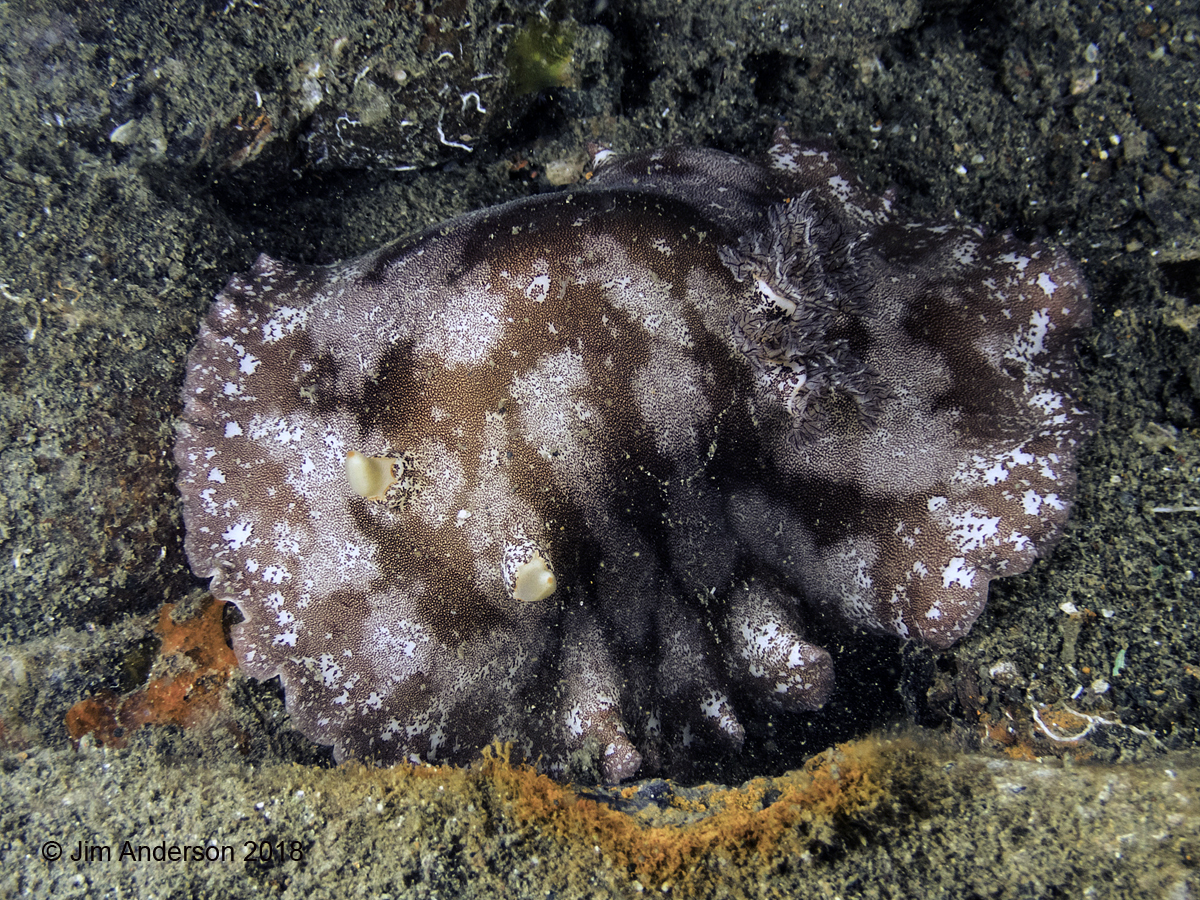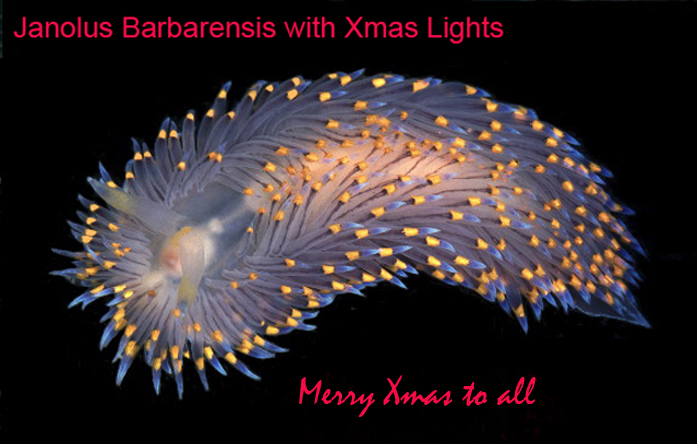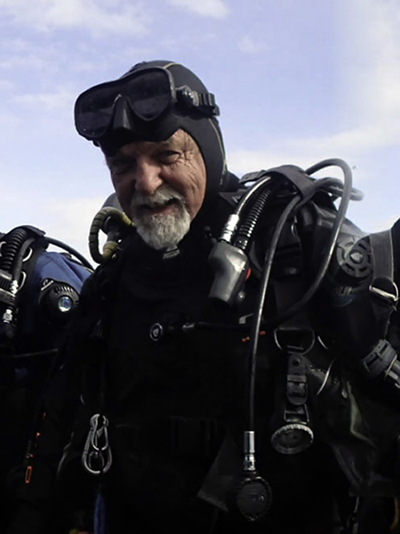 |
Image courtesy of Jim Anderson
Found at 5 metres with another under a piece of rubble on a muddy site during a night dive
Milne Bay, PNG
 |
Platydoris scabra(Cuvier, 1804) Some Platydorids can be a little difficult to ID, but Platydoris scabra is one of the exceptions. This species is brown with blotches of grey and white. The rhinophores are characteristically orange and the gill branches have dark lines. Although lacking on this specimen, most have a orange marginal band. It is common throughout the Indo-Pacific often crawling in the open at night. With this Branch of the Week, Mike, Jim, and I would like to wish all of you slug-o-philes a Very Merry Christmas and a Happy, Healthy and Prosperous New Year. Sammamish, WA 98074 Dec., 2018 Send Dave email at davidwbehrens@gmail.com |

An architect who retired from practice in 2011, Jim Anderson is fascinated by the incredibly colourful world that lies just a short distance from the shore around the coast of his home in Scotland. He learned to dive there and very quickly discovered the diversity and extravagance of life that the grey sea does well to disguise. Photography started as a means of recording these sights - to try in some way to let others into this wonderful new world that was opening up. He commenced diving in 1987 and has recorded over 4000 dives, over 2200 around Scotland, mostly with a camera in hand and has developed special skills in capturing images that have been widely published in national diving publications and identification guides. He is the proprietor of nudibranch.org the portal to his extensive nudibranch and other web sites covering his home country and the destinations he has visited in the Philippines, Indonesia, Maldives, Red Sea, Kenya, Ireland and in the Caribbean. He is a 1st Class Examiner with the Scottish Sub Aqua Club and delivers Nudibranch Identification courses on behalf of the UK Marine Conservation Society."
Send Jim mail at jander4454@gmail.com WEBMASTER'S NOTES: Jim is being rather modest about the rigors of diving for sea slugs in his home waters. Although not mentioned the reader can be assured that getting geared up in the waters off Scotland is a challenge in itself! Our hats are off to you Jim!
|

Attention all you Sluggers, and you know who you are! The NSSI 2nd edition is now available in ebook PDF and book form . The hard back version will become available Nov. 1st. Both will cost $65 (individually). You will need to jump through a few hoops to get the electronic version as pdf distribution is protected by Adobe ID!! Please read the following to enable reading your electronic purchase! This new 2nd Edition is updated and reorganized, including 185 new species. Among other features, the new edition includes additional photographs of species, an identification key, and an up-to-date classification reflecting the latest evolutionary relationships. The Indo-Pacific represents the largest expanse of tropical ocean in the world, stretching from the Indian Ocean coast of southern Africa and the Red Sea to the central Pacific of the Hawaiian Islands, Easter Island and the Marquesas. This region supports the most diverse marine fauna of any place in the world for most groups of marine organisms. The nudibranchs and sea slugs are no exception to this rule; there are about 3,000 described species of these organisms in the world and at least 40% of these have been found exclusively in the Indo-Pacific tropics. This book illustrates 2,138 Indo-Pacific nudibranchs and sea slugs, including many undescribed species.
|

|
